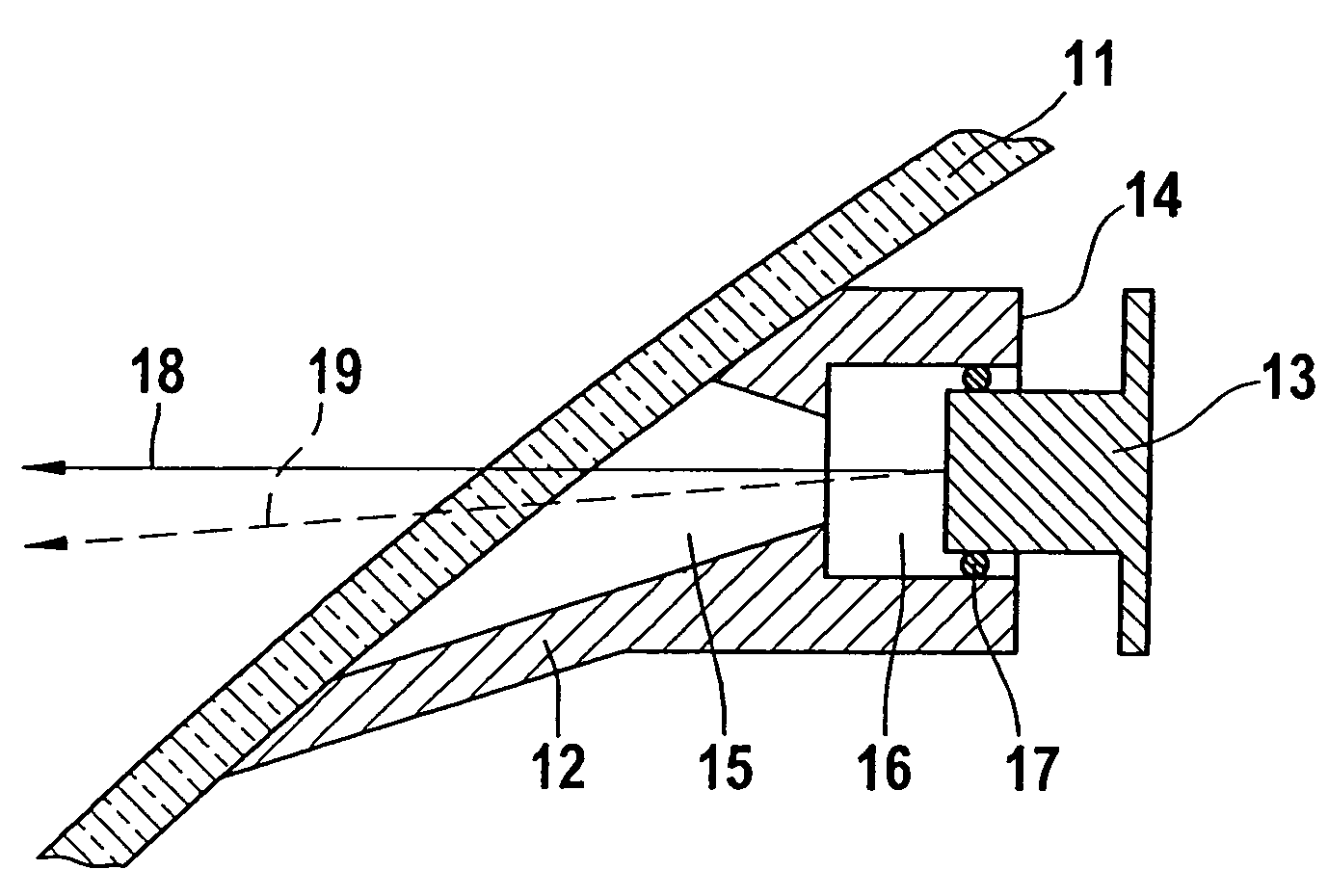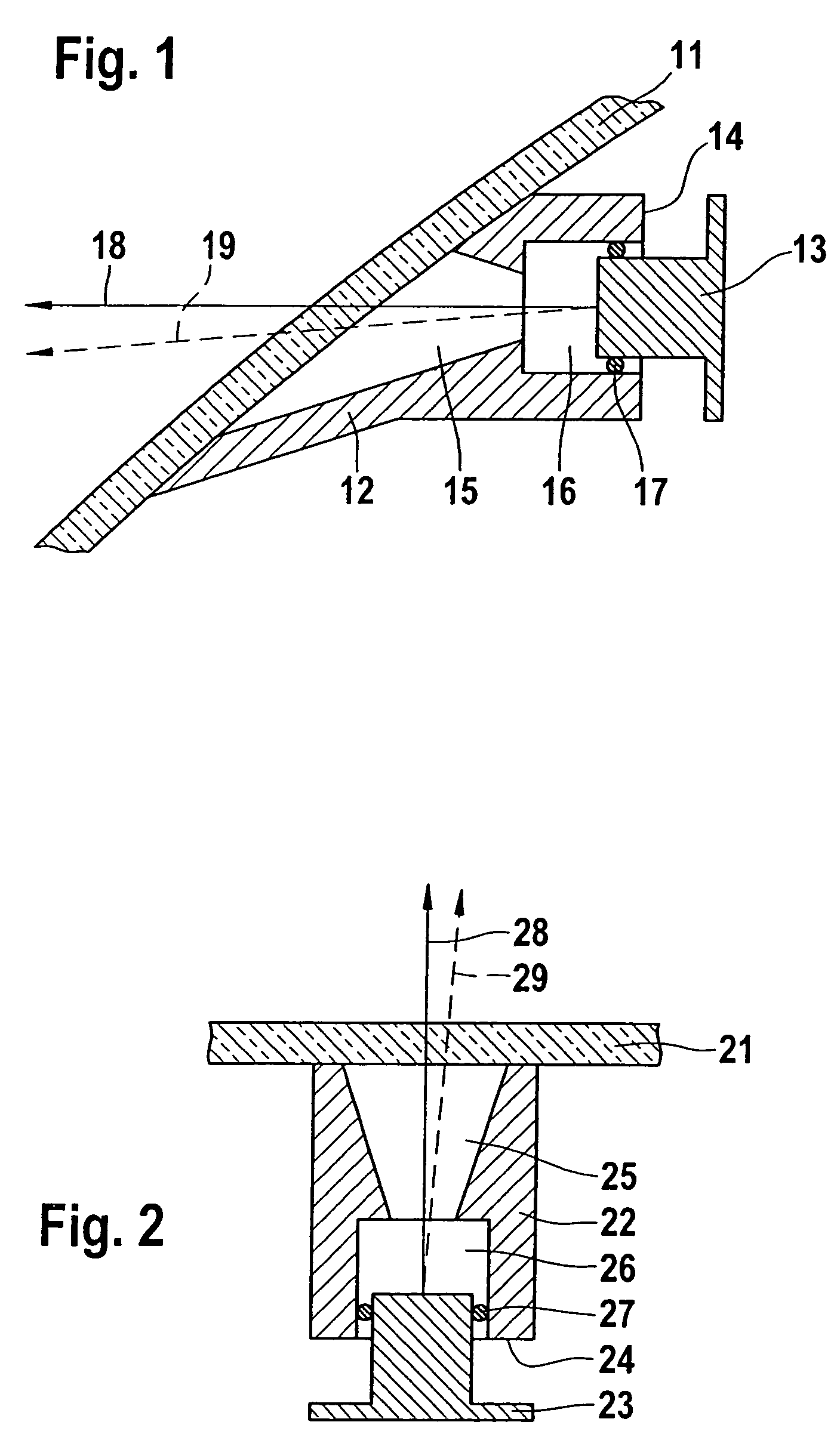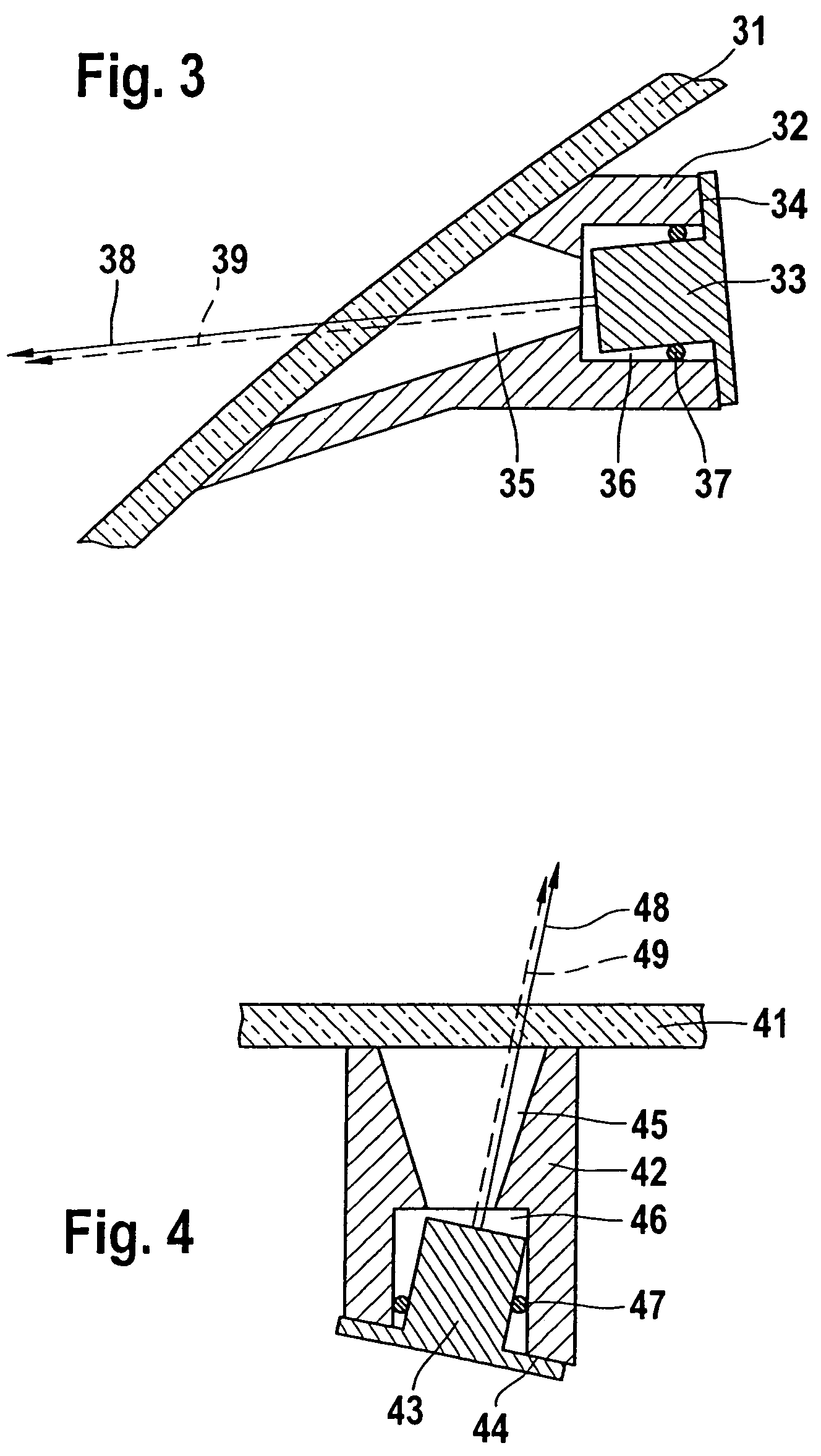Method and device for fastening and aligning a sensor
a sensor and fastening technology, applied in the direction of photometry using electric radiation detectors, optical radiation measurement, instruments, etc., can solve the problems of time and cost saving, deviation of the sensor axis from the nominal direction, and inability to precisely align the sensor. achieve the effect of increasing the useful range of the stereo camera system
- Summary
- Abstract
- Description
- Claims
- Application Information
AI Technical Summary
Benefits of technology
Problems solved by technology
Method used
Image
Examples
Embodiment Construction
[0029]FIGS. 1 and 2 show the side view and the top view of a device for fastening and aligning a sensor 13, 23, in an exemplary embodiment a video sensor, before the reworking of sensor seating surface 14, 24. The support 11, 21, on which video sensor 13, 23 is mounted, is the windshield of a motor vehicle. Video sensor 13, 23 is connected via a holding element 12, 22 to the support 11, 21. The connection of video sensor 13, 23 to holding element 12, 22 is made via seating surface 14, 24. Holding element 12, 22, in an exemplary embodiment, has a cylindrical accommodation 16, 26 for a part of video sensor 13, 23. Sensor antechamber 15, 25 is used as a baffle, for the reduction of interfering, stray pick-up light. In FIGS. 1 and 2, the deviation of sensor axis 18, 28 from the nominal direction 19, 29 is illustrated. In an exemplary embodiment, sensor axis 18, 28 is determined by the optical axis of the video sensor 13, 23. In an exemplary embodiment, nominal direction 19, 29 is determ...
PUM
| Property | Measurement | Unit |
|---|---|---|
| adhesion | aaaaa | aaaaa |
| distance | aaaaa | aaaaa |
| mechanical alignment | aaaaa | aaaaa |
Abstract
Description
Claims
Application Information
 Login to View More
Login to View More - R&D
- Intellectual Property
- Life Sciences
- Materials
- Tech Scout
- Unparalleled Data Quality
- Higher Quality Content
- 60% Fewer Hallucinations
Browse by: Latest US Patents, China's latest patents, Technical Efficacy Thesaurus, Application Domain, Technology Topic, Popular Technical Reports.
© 2025 PatSnap. All rights reserved.Legal|Privacy policy|Modern Slavery Act Transparency Statement|Sitemap|About US| Contact US: help@patsnap.com



